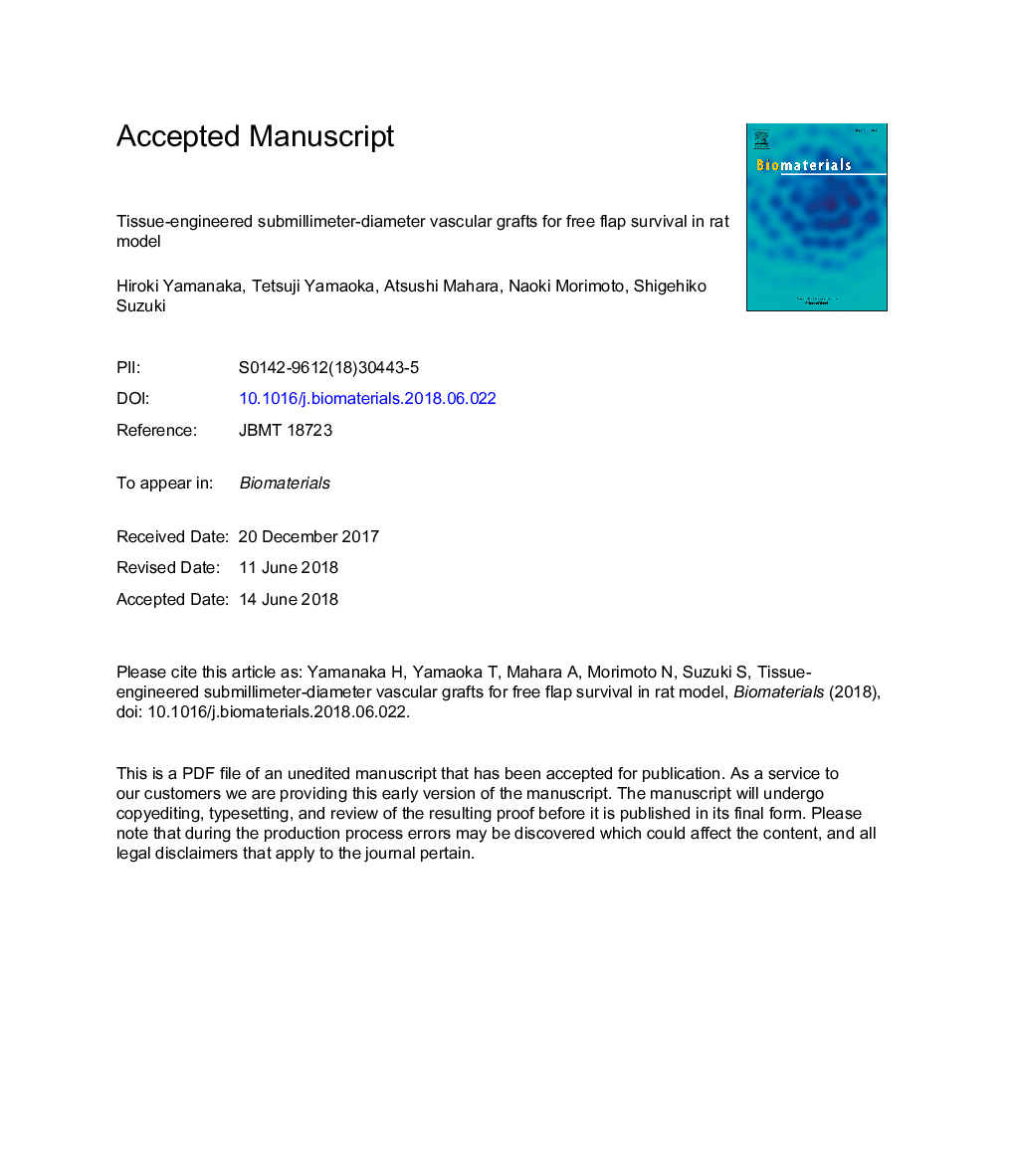| Article ID | Journal | Published Year | Pages | File Type |
|---|---|---|---|---|
| 6484349 | Biomaterials | 2018 | 29 Pages |
Abstract
Vascular grafts for free flap transfers should be of very small diameter and remain patent for approximately three weeks to supply blood until the revascularization from the surrounding tissue is established, with the autologous vein grafts acting as the gold standard. Artificial submillimeter-diameter vascular grafts with clinically useful size of 0.6â¯mm inner diameter and 5â¯cm length were prepared and evaluated by replacing the axial artery of free flap in rats. The rat tail artery, selected as a novel bioscaffold material, was decellularized using ultrahigh-hydrostatic pressure (UHP) method and compared with the detergent-based conventional method. To induce rapid endothelialization, the graft lumen was modified with synthesized peptides, having high affinity to the endothelial progenitor cells. The UHP method and peptide modification at 37â¯Â°C were found to preserve the extracellular matrix structure well, leading to the stable immobilization of the peptide at the luminal surface. These grafts showed the neointima formation, even at the center position far from the native vessels, remained patent for three weeks, and resulted in the flap survival in the rat free-flap model. The tissue-engineered vascular grafts with functionalized lumen have great future potential as an alternative to autologous vein grafts in free flap transfers.
Keywords
Related Topics
Physical Sciences and Engineering
Chemical Engineering
Bioengineering
Authors
Hiroki Yamanaka, Tetsuji Yamaoka, Atsushi Mahara, Naoki Morimoto, Shigehiko Suzuki,
